Last-Minute NYC Holiday Gift Guide 🎁
We’ve created a holiday gift guide with presents for the intrepid New Yorker that should arrive just in time—


Nestled within New York City’s sprawling Chinatown is a little, one block street named Mosco. It is the last remnant of Cross Street (later Park Street) which originally ran from Lafayette Street on the west to Mott Street on the east in the first half of the 19th century.
The telescoping of Cross Street into Park Street and finally, into Mosco Street would normally be considered a sad diminution of a once proud thoroughfare were it not for the little street that remains in its wake. Not only does Mosco Street exude the charm and mystique of a quintessential New York City side street, it has retained the best aspects of its past, which are captured by its unique vista and topography.
The original Cross Street traversed the notorious Five Points area on the Lower East Side, making it one of the five intersecting streets of this notorious crime-infested slum. Later in the century, after an outcry of revulsion based on Jacob Riis’s exposé of the area, most of the derelict, vermin-infested tenement buildings were demolished.
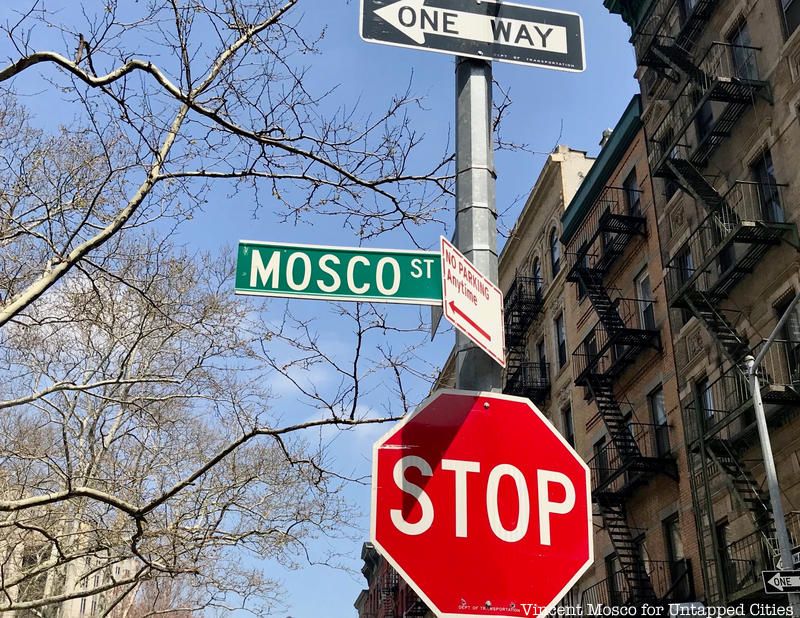
Cross Street was renamed Park Street in 1854, presumably because it terminated at City Hall Park at its western end. Mott Street at the eastern end of Park Street became the favorite destination of Chinese immigrants beginning in the 1870s. Similarly, Mulberry Street became the choice location for Italian immigrants in the final decades of the 19th century and the beginning of the 20th century.
Mulberry Bend Park, a much needed green space, opened in 1897. With the creation of Mulberry Bend Park, the aptly named Park Street formed the new park’s southern boundary. In 1911, Mulberry Bend Park was renamed Columbus Park in deference to the large Italian-American community in the area.
Park Street, west of Baxter Street, was wiped out when the New York State Supreme Court Building was built between 1919 and 1927, leaving Park Street just two city-blocks long between Baxter Street on the west and Mott Street on the east. Bisecting Park Street was Mulberry Street, which ran through the heart of Little Italy. In 1982, Park Street was renamed Mosco Street, as a tribute to beloved community activist, Frank Mosco. Later, Columbus Park was extended to the south, sweeping away Mosco Street between Baxter and Mulberry. As a result, Mosco Street, as we know it today, is only one city-block in length. But what a block it is!
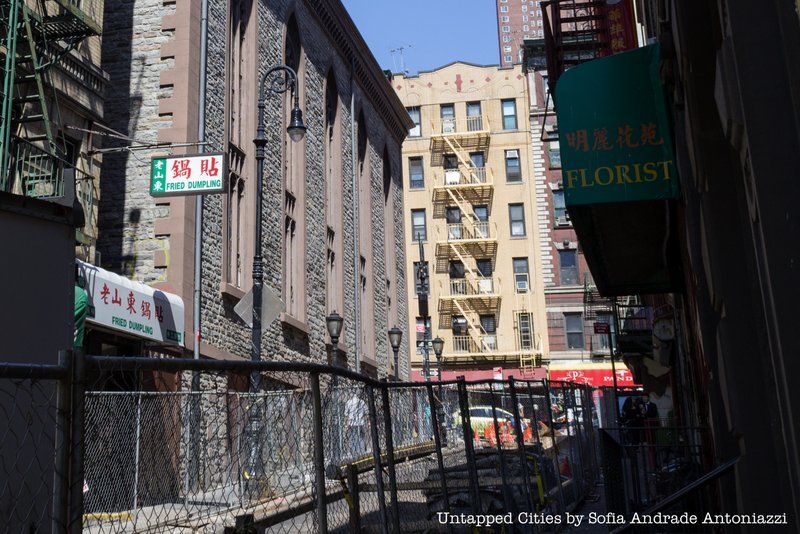
View of Transfiguration Church on the left side of the picture at the top of Mosco Street
Mosco Street is located on a very steep incline, one of the steepest in the city. The following image presents a recent daytime view of Mosco Street from the top of the hill, facing east. Unfortunately, Mosco Street is currently undergoing re-construction to replace a main water line.
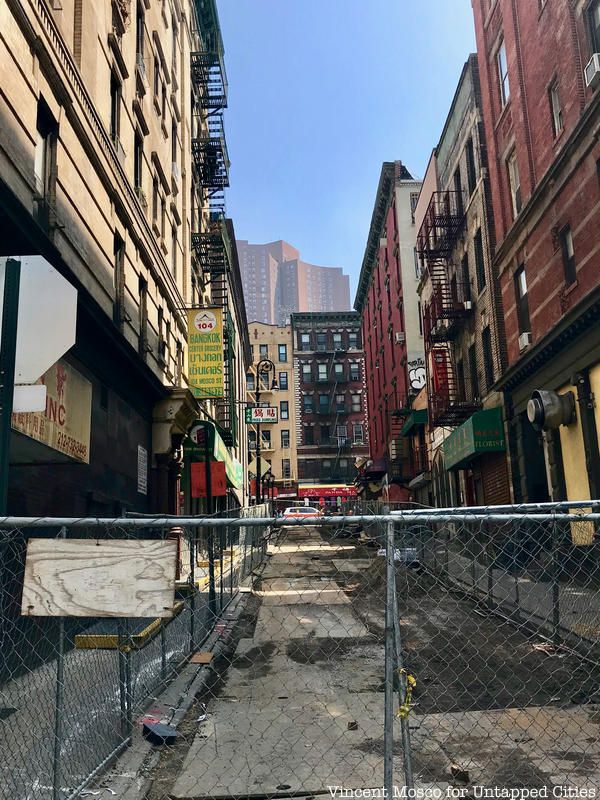
View of Mosco Street facing east.
At the crest of the hill is Transfiguration Church, which was built by a Lutheran congregation in 1801, but later acquired by the Roman Catholic Church in the mid-1800s. It is the oldest Catholic Church building in the city. Its high elevation and prominent octagonal tower evidently was intended to beckon the surrounding community to spiritual concerns. The church is connected to an elementary school on Mott Street, which is operated by the Maryknoll order of priests, brothers and nuns, who are noted for their missionary work in the Far East and other parts of the world.
In the image directly above, the light colored building with the Gothic windows halfway up the block on the right was the old church rectory for decades, but is now a Chinese community center. On the left side of the picture, at the far end of the street, is a shop with a white sign, which is noted for having some of the best Chinese dumplings in the city. At the foot of the hill on the southeast corner of Mulberry Street is a Chinese funeral parlor, which used to be a bank. Banca Italia opened in 1888 and catered to the burgeoning Italian-American neighborhood. When Columbus Park opened, the owner of the bank, Antonio Cuneo, had an ornate carved-stone entrance erected on the corner of the building, which has retained all its glory to this day. Straight ahead at the base of the hill, across Mulberry Street, is Columbus Park.
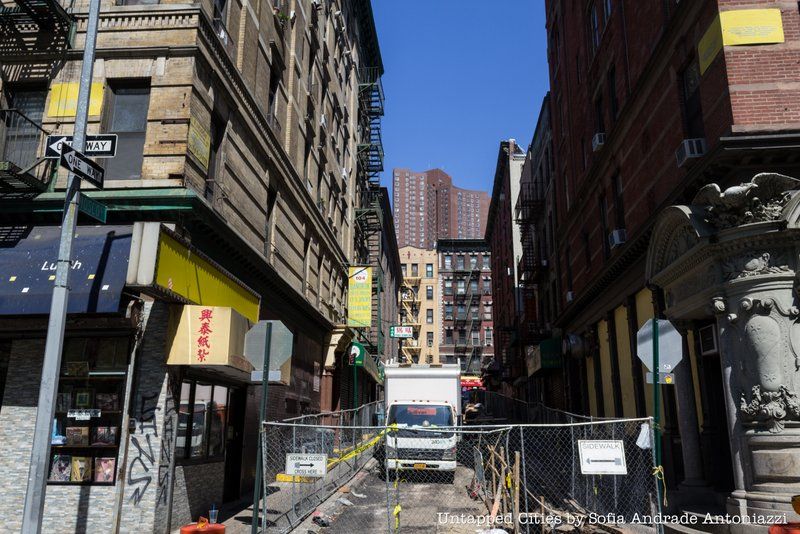
Right, the ornate entrance to the former Banca Italia
Jutting up in the distance behind the park and the New York State Supreme Court Building is 1 World Trade Center, which offers profound visual evidence of how the world outside looms over this urban village. Mosco Street’s unique location captures this beautifully by offering a direct view of the tower’s pinnacle, as seen in the photograph, especially in its nighttime illumination. Just left of center in the distance is the golden pyramidal summit of the Thurgood Marshall U.S. Courthouse, which was completed in 1936, a project of Franklin Roosevelt’s New Deal. Unfortunately, the building all too often became an involuntary destination for individuals in the neighborhood who ran afoul of the law.
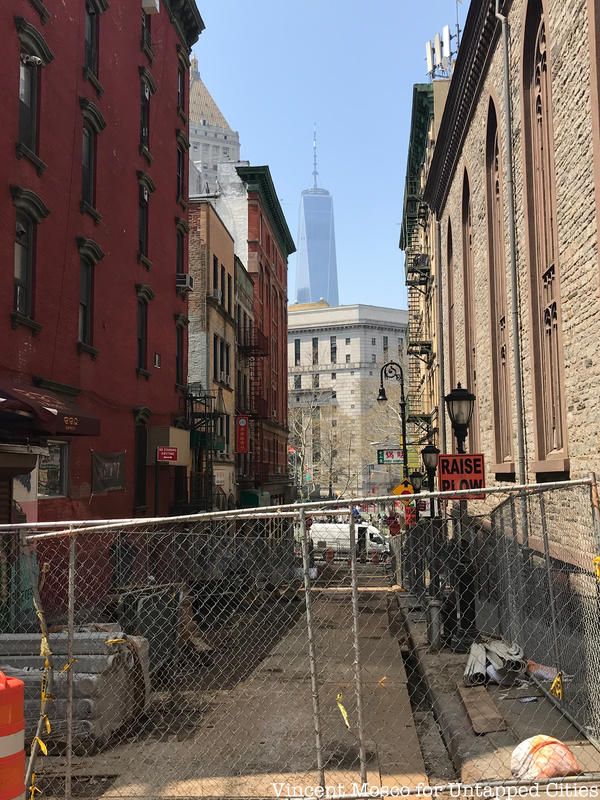
To kids who grew up in the neighborhood Mosco Street was known as Suicide Hill because boys regularly risked their lives joyriding down the middle of the street on roller skates or box scooters. In the winter, kids would mount sleighs to enjoy the hair-raising downhill trip. (Note the railing alongside the church, which was used by more sensible parishioners on their way to and from the church.) Needless to say, it took nerve and dexterity to stop before reaching the bottom of the hill, where cross traffic could abruptly ruin the fun. Fortunately, a parish priest from Transfiguration Church was only a few steps away should the need for last rites arise. And the nearby funeral parlor would be an added convenience.
Like Doyers and Pell Streets a couple of blocks away, Mosco Street is a mecca for tourists and photographers who can’t resist its charm. In bygone years, Mosco Street was an important link between the Chinese-American and Italian-American communities, which have peacefully lived side-by-side in this Lower East Side neighborhood for one and a half centuries, attending the same school, playing games and sports together, and often intermarrying.
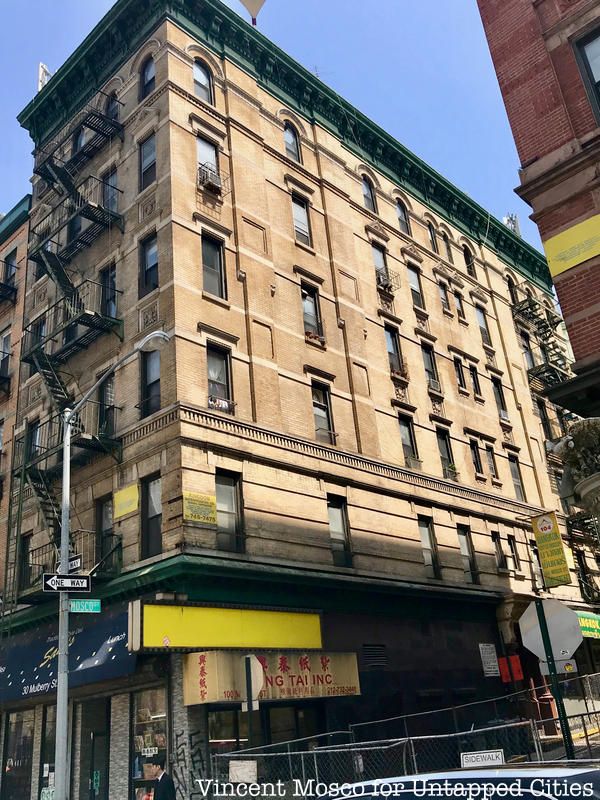
100 Mosco Street where Frank Mosco lived
It is fitting that Mosco Street is named for an admired community organizer who actually lived on the block. One of Frank Mosco’s achievements is that he helped establish the Two Bridges Little League. Because of him, kids in the area, who played stickball in the streets or pick-up basketball games on the playgrounds, were introduced to organized team sports. This experience served them well later in life.
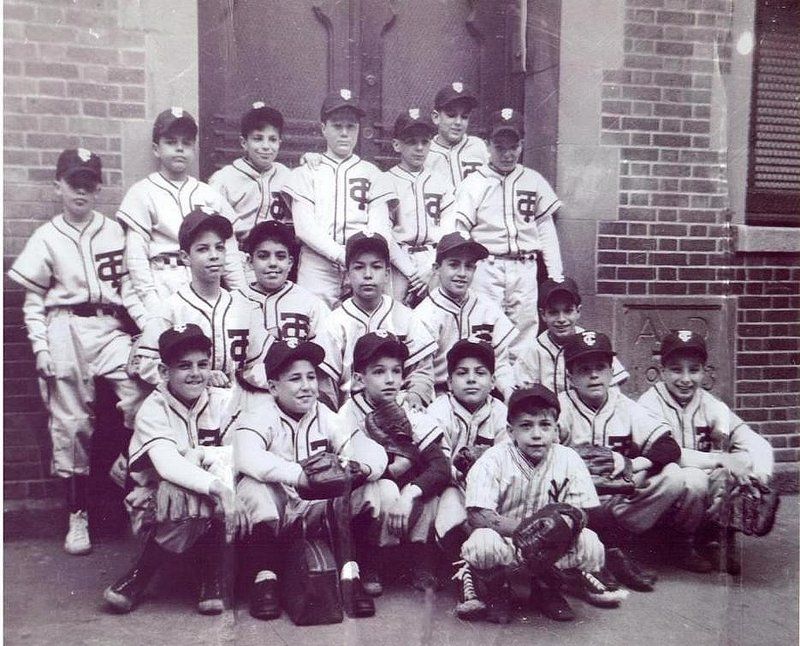
The Transfiguration Little League team in 1959. Photo courtesy Lawrence Venturato
Frank Mosco managed Transfiguration’s Little League team to a Two Bridges Little League championship in 1960. Later on he would become head of the Two Bridges Neighborhood Council and Chairman of New York City’s Planning Board for an area spanning the lower Manhattan financial district, Chinatown, and Little Italy. Whether helping a local resident deal with an eviction notice or shepherding a much-needed subsidized housing development to completion, Frank was a model community leader.
A plaque honoring Frank Mosco and Corkey Lee, an Asian American photojournalist and activist, was unveiled on the exterior of Hop Kee Restaurant in June 2025.
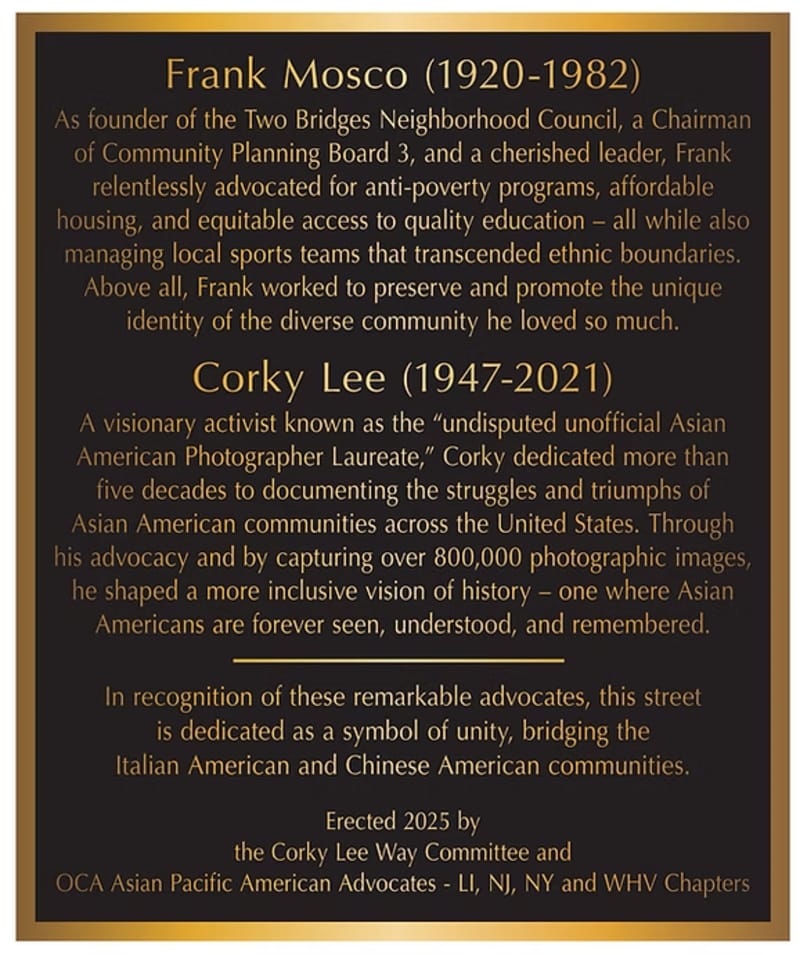
The author, Lawrence Venturato, grew up on the Lower East Side and was the shortstop on the Transfiguration Little League Team in 1960. He lived on Mulberry Street right across from Columbus Park and attended Transfiguration School.
Subscribe to our newsletter